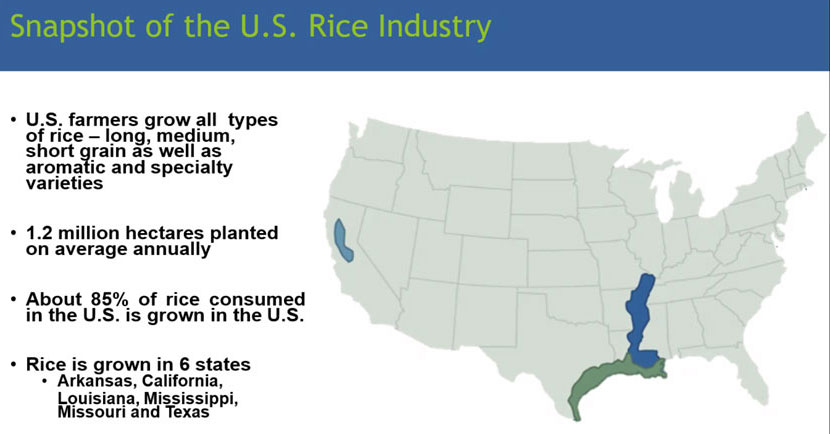 Industry snapshot shows waterfowl habitat
Industry snapshot shows waterfowl habitat
Mar 15, 2022
WASHINGTON, DC -- Yesterday, 40 U.S. Department of Agriculture Foreign Agricultural Service (USDA/FAS) personnel heard from USA Rice, the U.S. Dairy Export Council, the American Hardwood Export Council, and the American Peanut Council about the successful messaging of U.S. sustainable agriculture.
USDA/FAS Deputy Administrator Mark Slupek kicked off the meeting noting the Biden Administration’s priority to address climate change. FAS Administrator Daniel Whitley referenced the new Partnerships for Climate-Smart Commodities, and all commodity groups noted their appreciation of the funding for such vital climate-smart practices.
USA Rice’s Steve Linscombe, executive director of The Rice Foundation, gave an overview of U.S. rice industry sustainability efforts.
“Our producers have been farming sustainably before they even heard the word sustainability,” said Linscombe. “We have many fourth, fifth, and even sixth generation farmers here in the U.S., so sustainable rice farming is a way of life – ensuring that the land being passed to subsequent generations is healthier and more productive.”
Linscombe discussed water use practices such as alternate wetting and drying or furrow irrigation that have reduced water use by 52 percent, improved energy use and air quality by reducing greenhouse gas emissions by 41 percent through improvements like using solar panels, and enhancing biodiversity by providing habitat for wintering waterfowl.
The U.S. has largely relied on a market-based approach where consumers reward the behavior of sustainable practices by paying more for those products. Some of the other commodities noted that this has somewhat morphed into a requirement; there are now end users that don’t accept the product if it doesn’t meet certain sustainability criteria.
“No major rice producing country incentivizes sustainability as much as we do here in the U.S.,” continued Linscombe. “We are in the infancy of end users rewarding sustainable practices and we know our farmers are well positioned to continue the hard work.”